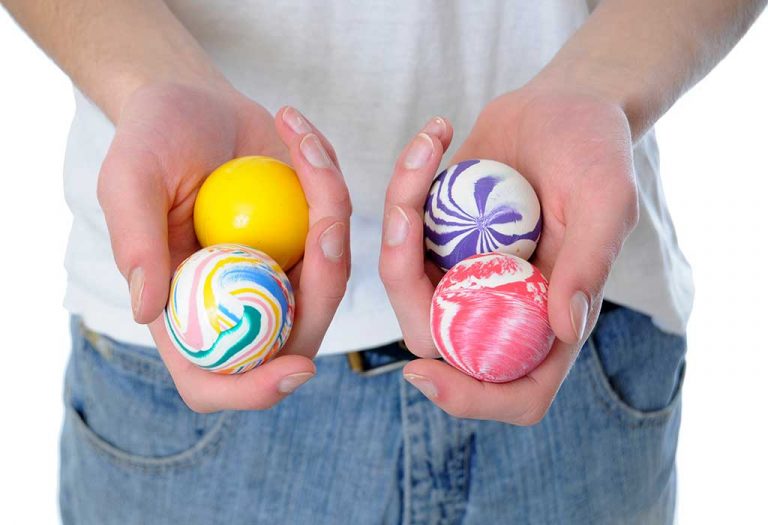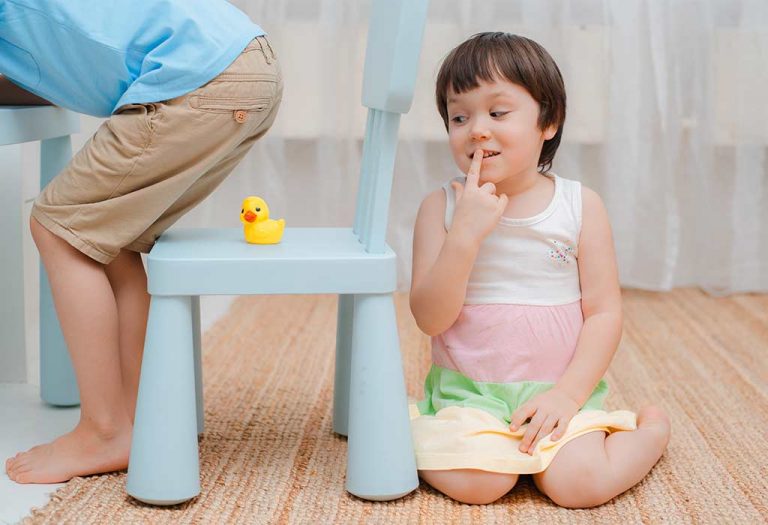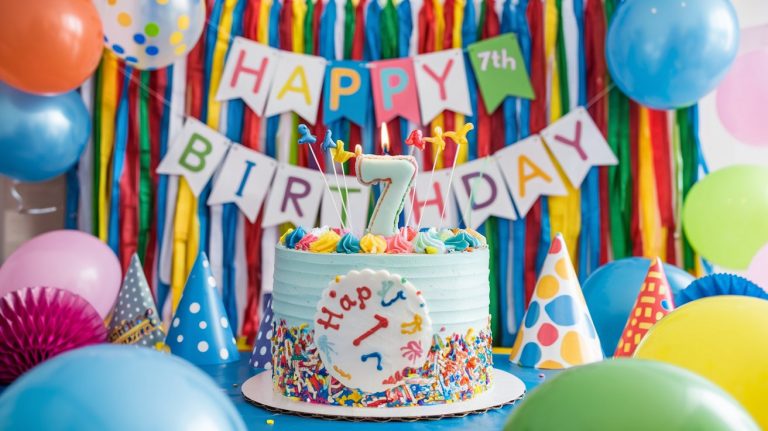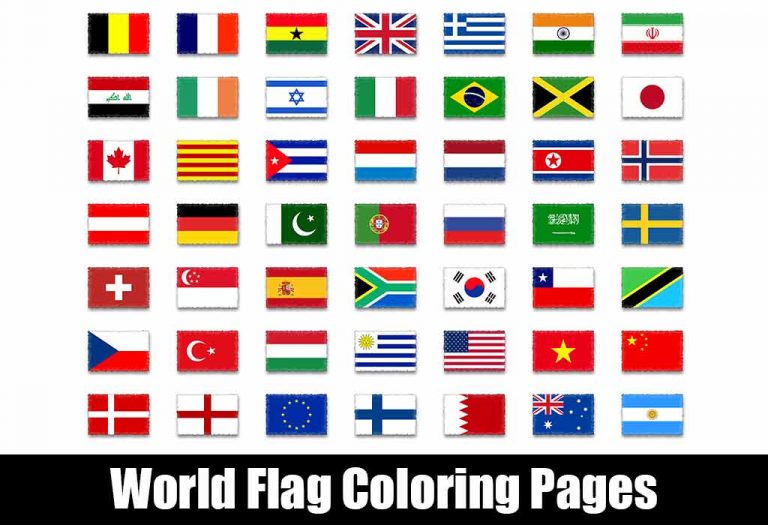How to Make a Bouncy Ball – A Step-by-Step Guide for Kids
Making bouncy balls must be a craft project that we have all done in science class during our childhood. It’s time to share your fun experience with your kids by making bouncy balls with them. The materials required for making a DIY bouncy ball are available in most homes or may be easily found at a department store. Your kids will love to experiment with different kinds of materials and find the ones that make the balls bounce the most. This hands-on activity will encourage creativity and problem-solving, making it an educational experience as well. Making bouncy balls is a quick and inexpensive experiment that will keep your tiny scientists amazed and entertained for hours.
How to Make a Bouncy Ball – Step by Step Instructions
Wondering how to create your own bouncy ball? Making a bouncy ball is very easy and there are different combinations of materials that you can experiment with, some that will make the ball bounce slightly, and the others will make it bounce like crazy. This activity will only take around five minutes and the materials you will need are easily available. Procure the materials listed below and follow the step-by-step instructions to make your own bouncy ball for kids.
Materials/Tools You Need
There are many ways in which you can make your bouncy ball unique. You could use glitter glue instead of normal glue, add food color or make a glow-in-the-dark bouncy ball by adding neon paint. The basic materials you’ll need for making a homemade bouncy ball are:
- 2 plastic cups
- Measuring spoons
- 2 tablespoons warm water
- A wooden craft stick or something you can use for stirring the solutions
- ½ teaspoon borax (if you don’t have it at home, you can find it in the laundry detergent section in a local store)
- 1 tablespoon glue
- ½ tablespoon cornstarch
- Food color (optional)
- Plastic bag or container (to store your ball)
Instructions
Here are the step-by-step instructions for the making of a homemade bouncy ball:
Step – 1
First, take a plastic mug and mix the borax and water in it. Keep stirring till the borax has completely dissolved. If you want it to dissolve faster, you can use hot or warm water but be careful while doing so when you’re working with kids. Borax can be a skin irritant if it has not been diluted so make sure that you use it in small amounts and dissolve it properly. If you have sensitive skin or a skin condition, or if you are conducting the activity with a toddler, avoid using borax.
Step – 2
In the second cup, mix cornstarch, glue, and food color, and then pour ½ teaspoon of the mixture made in Step – 1 into the cup. Don’t pour the borax mixture first as it will yield a less satisfactory result. Be mindful of the colors you choose. If you are making a multi-colored ball, it is best to conduct this step separately for each of the colors and then mix the mixture together or else the ball might end up looking muddy.
Step – 3
Let the ingredients sit and interact for around 15 seconds and then stir. Keep stirring till the mixture hardens.
Step – 4
Once the mixture has hardened and is difficult to stir, remove it from the cup and roll it into a ball. Your bouncy ball is ready! You can guess and measure how high it can bounce. Make sure that once you’re done playing, store the ball in an airtight container or bag so that it doesn’t get hard too fast.
How It Actually Works
The science behind bouncy ball is very simple. This crafty science project is a demonstration of a chemical reaction between borax and glue. Borax acts as a cross-linker to the polymer molecules that are in the glue. This means that it creates chains of molecules that stay linked together even when you pick them up. The sticking together of polymers creates an elastomer, like a bouncy ball. This is the reaction that makes the ball bouncy and firm. However, the polymer chains are flexible, so when the ball hits surfaces, it becomes deformed. But since it is elastic, it retains its shape. And the cornstarch binds these molecules in a more effective manner so that they hold their shape.
How Do You Make a Bouncy Ball Without Borax?
Borax can be dangerous if ingested and can sometimes also be a skin irritant. Avoid using it if you have sensitive skin or a skin condition. If you are conducting the activity with toddlers or don’t have borax, you can make the bouncy ball using baking soda instead of borax.
Ingredients Needed
- 1/2 cup of school glue (white or clear)
- 1/2 cup of warm water
- 1 tablespoon of cornstarch
- 1/2 teaspoon of baking soda
- Food coloring (optional)
- 1 tablespoon of contact lens solution (or saline solution)
Steps
- In a small bowl, combine 1/2 cup of school glue with 1/2 cup of warm water. Stir until the glue is completely dissolved in the water.
- Add 1 tablespoon of cornstarch and 1/2 teaspoon of baking soda to the mixture. Stir thoroughly to ensure there are no lumps.
- If you want to add color to your bouncy ball, now is the time to add a few drops of food coloring. Stir until the color is evenly distributed.
- Slowly add 1 tablespoon of contact lens solution to the mixture. Stir continuously. The mixture will start to thicken and form a ball-like consistency.
- Once the mixture starts to come together, use your hands to knead it into a ball. If it’s too sticky, add a little more contact solution to help it form the right texture.
- Continue kneading until the ball is firm and bouncy. Once you’re happy with the consistency, set it aside to dry for a few minutes.
- After the ball has dried and firmed up a little, give it a bounce! Adjust the mixture with more cornstarch or contact solution if necessary to get the perfect bounce. Enjoy your homemade bouncy ball!
FAQs
Here are some common questions about making bouncy balls answered:
1. How can you experiment with a bouncy ball?
If you want to turn this craft project into a fun science experiment, you can adjust the quantities of borax, cornstarch and glue so that you can make the ball more bouncy. You can try to determine the best way to make the bouncy ball bounce for a longer time. You could try adding other materials like glitter glue and neon paint.
2. What makes a bouncy ball super bouncy?
You can experiment with different quantities of borax, cornstarch, and glue to make a super bouncy ball. You can also follow an alternative method that requires only water, borax, and Clear Elmer’s Glue or Glitter Glue. You can stir ½ cup of warm water with 1 tablespoon of borax and keep stirring the mixture till the borax has dissolved. You can add some more water if all of it hasn’t dissolved. Once this mixture has cooled, pour 2 tablespoons of Elmer’s glue or Glitter glue. Keep squeezing and squishing the ball till it is no longer sticky. Take it out of the borax solution and roll it into a ball. However, these balls will go flat and you will have to shape them into balls whenever you want to bounce them around.
3. Do bouncy balls become hard with time?
A bouncy ball usually remains fresh if you store it in a plastic container, and it will only become unusable because of the dirt it will accumulate. Make sure that the container you store the ball in is airtight. Since the ball is made of glue, it will dry out after a few days but the airtight container will prolong its life. The ball will also flatten a bit when you don’t play with it for some time, you can just roll it back into shape.
These were our DIY bouncy ball recipes. Try this simple, safe, and inexpensive craft experiment with your kids. They will love the quick activity and their new, colorful bouncy ball. You can fast roll the ball and watch it skid and bump into surfaces and gain more momentum. You can measure how high the ball bounces.
Also Read:
Puppet Making for Kids
DIY Playhouse Ideas for Children
DIY Shoebox Craft Ideas for Kids
DIY Plaster of Paris Craft Ideas for Children
Was This Article Helpful?
Parenting is a huge responsibility, for you as a caregiver, but also for us as a parenting content platform. We understand that and take our responsibility of creating credible content seriously. FirstCry Parenting articles are written and published only after extensive research using factually sound references to deliver quality content that is accurate, validated by experts, and completely reliable. To understand how we go about creating content that is credible, read our editorial policy here.






















